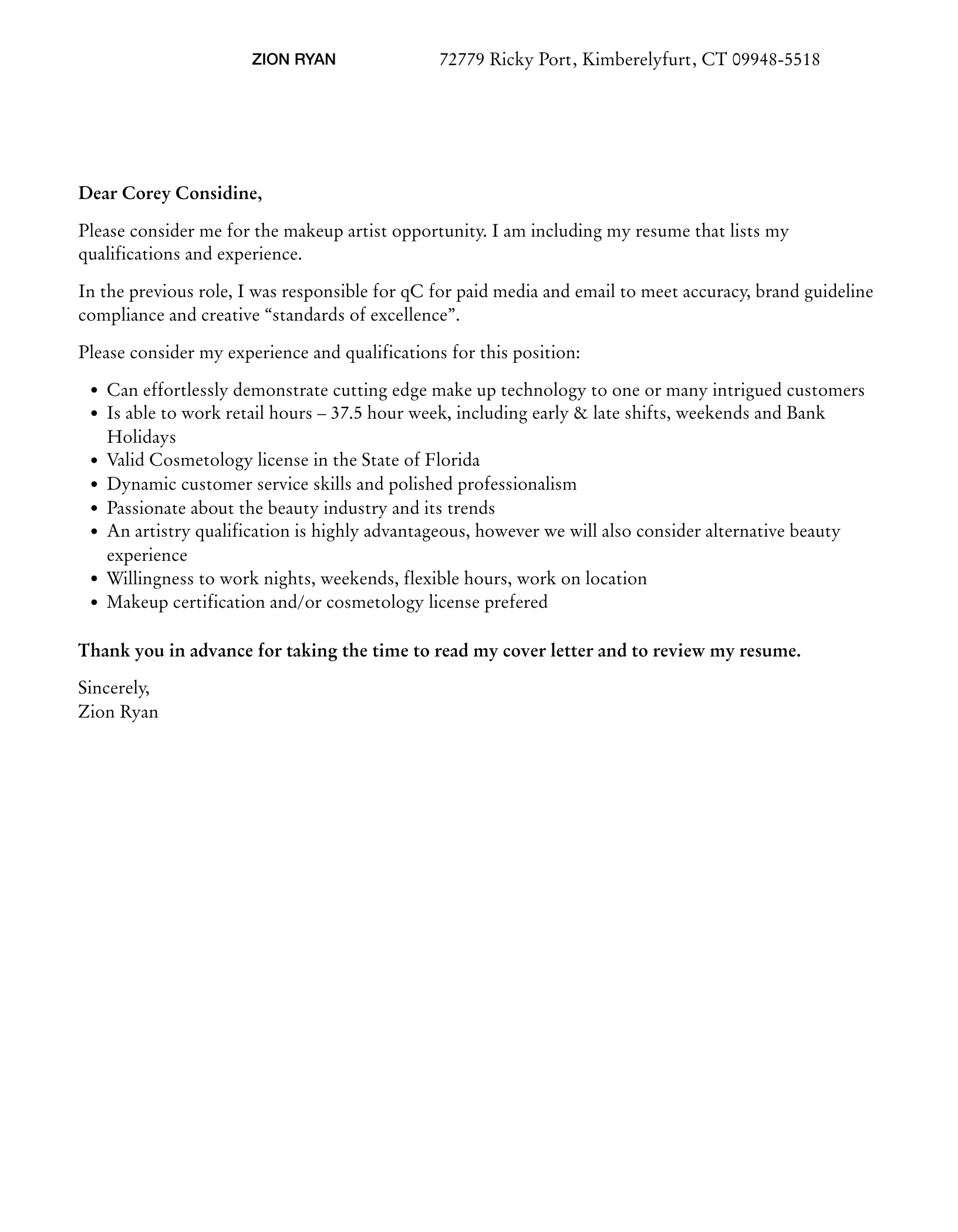Cover Letter Makeup Artist Essentials
A cover letter is a crucial document when applying for a makeup artist position. It serves as your introduction to a potential employer, providing a snapshot of your skills, experience, and passion for the industry. Unlike your resume, which lists your qualifications, the cover letter gives you the opportunity to tell your story, showcase your personality, and highlight what makes you the ideal candidate. A well-crafted cover letter can significantly increase your chances of landing an interview, so it’s essential to invest time and effort in creating one that stands out. Remember, this is your chance to make a strong first impression and demonstrate why you are the perfect fit for the role. This guide will walk you through the essential components of a compelling makeup artist cover letter.
Highlighting Your Skills and Experience
Your cover letter is the perfect place to showcase your skills and experience as a makeup artist. Begin by clearly stating your expertise, whether it’s in bridal, fashion, film, or special effects makeup. Detail your technical abilities, such as airbrushing, contouring, highlighting, and color correction. If you have certifications or specialized training, be sure to mention them. Quantify your accomplishments whenever possible – for example, the number of clients you’ve worked with, the successful completion of a project, or any awards or recognition you’ve received. Use action verbs to describe your responsibilities and achievements, and provide specific examples to illustrate your skills. For instance, instead of saying you ‘did makeup for photoshoots,’ you could say, ‘Created editorial makeup looks for five high-fashion photoshoots, resulting in publication in [Magazine Name].’ This level of detail will make your cover letter more impactful and memorable.
Showcasing Your Portfolio and Work
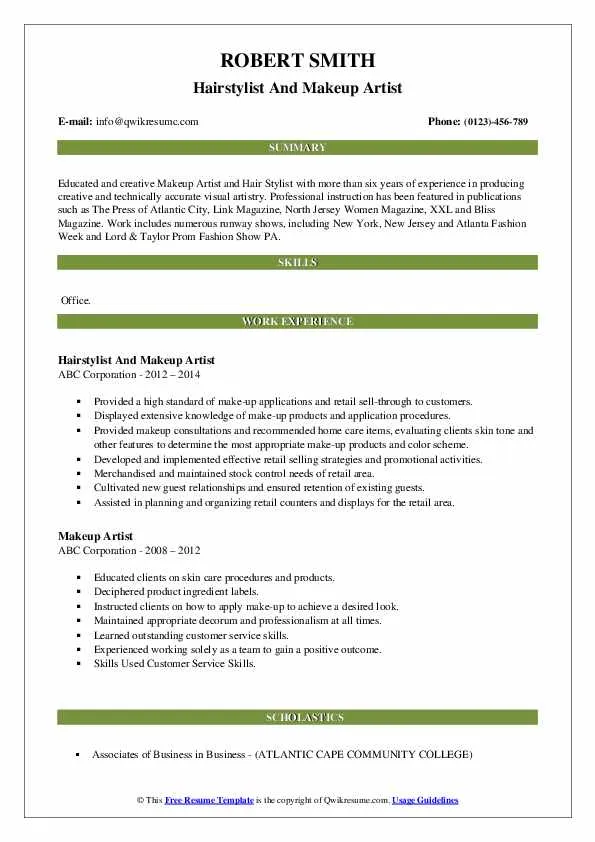
A makeup artist’s portfolio is their most valuable asset, and your cover letter is the perfect place to reference it. Clearly state that you have a portfolio and how the potential employer can access it. If you have an online portfolio, provide the link prominently. If it’s a physical portfolio, mention that you’re happy to provide samples or bring it to an interview. In your cover letter, briefly highlight key pieces from your portfolio that are relevant to the job you’re applying for. For example, if the role is for a bridal makeup artist, emphasize your experience in creating elegant and long-lasting bridal looks. If you’re applying for a position in a film or television studio, mention any special effects makeup or character design work you’ve done. This helps the employer quickly understand your capabilities and see if your style aligns with their needs. Your portfolio gives visual context to the skills you describe.
Tailoring Your Cover Letter
One of the most important aspects of a successful cover letter is tailoring it to each specific job application. Avoid using a generic cover letter; instead, carefully read the job description and customize your letter to match the employer’s needs and expectations. Identify the key skills and qualifications they’re looking for and highlight your relevant experience and abilities. Research the company or client to understand their brand aesthetic and target audience. Demonstrate your understanding of their vision and explain how your skills and experience align with their specific requirements. This level of personalization shows that you’ve taken the time to learn about the opportunity and are genuinely interested in the role. Customizing your cover letter will greatly increase your chances of getting noticed and securing an interview.
Understanding the Purpose of a Cover Letter
The primary purpose of a cover letter is to introduce yourself, express your interest in a position, and persuade the employer to invite you for an interview. It’s your opportunity to expand on the information provided in your resume and to showcase your personality and communication skills. A well-written cover letter demonstrates your professionalism, attention to detail, and enthusiasm for the job. It should highlight your key skills and experiences that align with the job requirements and explain why you are the ideal candidate. A cover letter also allows you to address any potential gaps or weaknesses in your resume, such as a career change or a period of unemployment. Furthermore, it shows the employer that you have taken the time to learn about the position and are genuinely interested in the opportunity. It’s more than just a formality; it’s a strategic tool that can significantly increase your chances of success.
Writing a Strong Opening
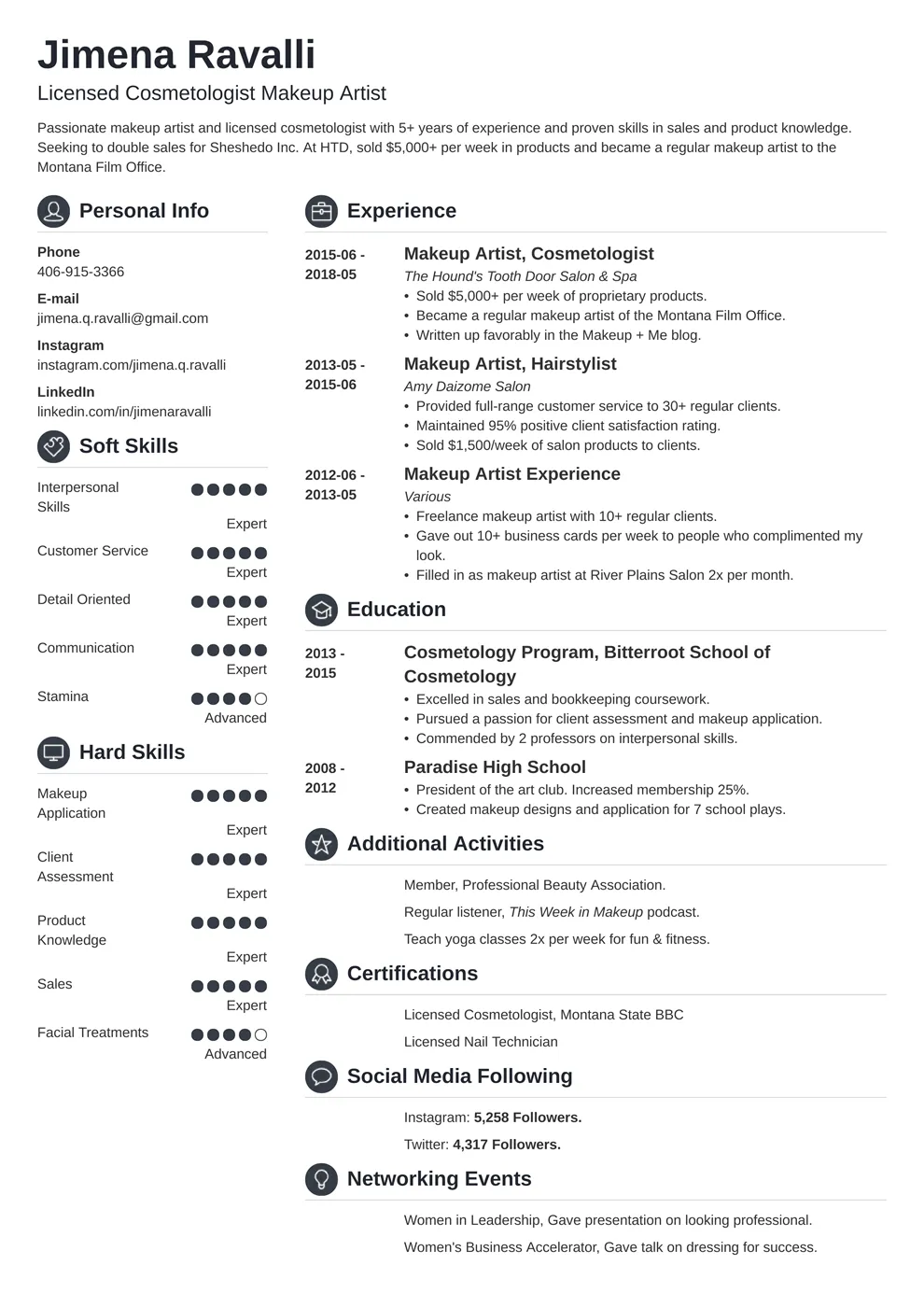
The opening paragraph of your cover letter is crucial, as it sets the tone and grabs the reader’s attention. Start by clearly stating the position you’re applying for and how you learned about it. If you were referred by someone, mention their name. Then, immediately express your enthusiasm for the role and the company. Briefly highlight one or two key skills or experiences that make you a strong candidate. The opening should be concise and engaging, drawing the reader in and making them want to learn more. Avoid generic openings like ‘I am writing to express my interest…’ Instead, aim for a more personalized and dynamic approach. For example, ‘I am writing to express my keen interest in the Makeup Artist position at [Company Name], as advertised on [Platform].’ Then immediately follow this by mentioning something specific you like about the company or the role. This shows that you have done your research and are truly interested.
Crafting Compelling Body Paragraphs
The body paragraphs are the heart of your cover letter, where you provide more detail about your skills, experience, and qualifications. Use these paragraphs to elaborate on your key achievements and demonstrate how they align with the job requirements. Support your claims with specific examples, quantifiable results, and relevant details. Focus on the skills and experiences that are most relevant to the position. Use action verbs to describe your responsibilities and accomplishments. Highlight your creative process, your ability to work under pressure, and your communication skills. Show the employer what you can bring to the table and how you can contribute to their team. Organize your paragraphs logically, with each one focusing on a specific skill or aspect of your experience. Keep the language clear, concise, and easy to understand. Ensure that you’re not just listing your past roles, but demonstrating how you excelled in those roles and the impact you had. Remember to tailor your content to match the job description and show the employer that you are a good fit.
Creating a Powerful Closing
The closing paragraph of your cover letter is your final opportunity to leave a lasting impression. Reiterate your enthusiasm for the position and the company. Summarize your key qualifications and reiterate why you are the best candidate for the role. Clearly state your interest in an interview and thank the employer for their time and consideration. Provide your contact information again, including your phone number and email address. Use a professional closing, such as ‘Sincerely’ or ‘Best regards,’ followed by your typed name. Make sure to proofread the entire cover letter, including the closing, for any typos or grammatical errors. A well-crafted closing paragraph reinforces your interest, summarizes your key selling points, and makes it easy for the employer to contact you.
Formatting Your Makeup Artist Cover Letter
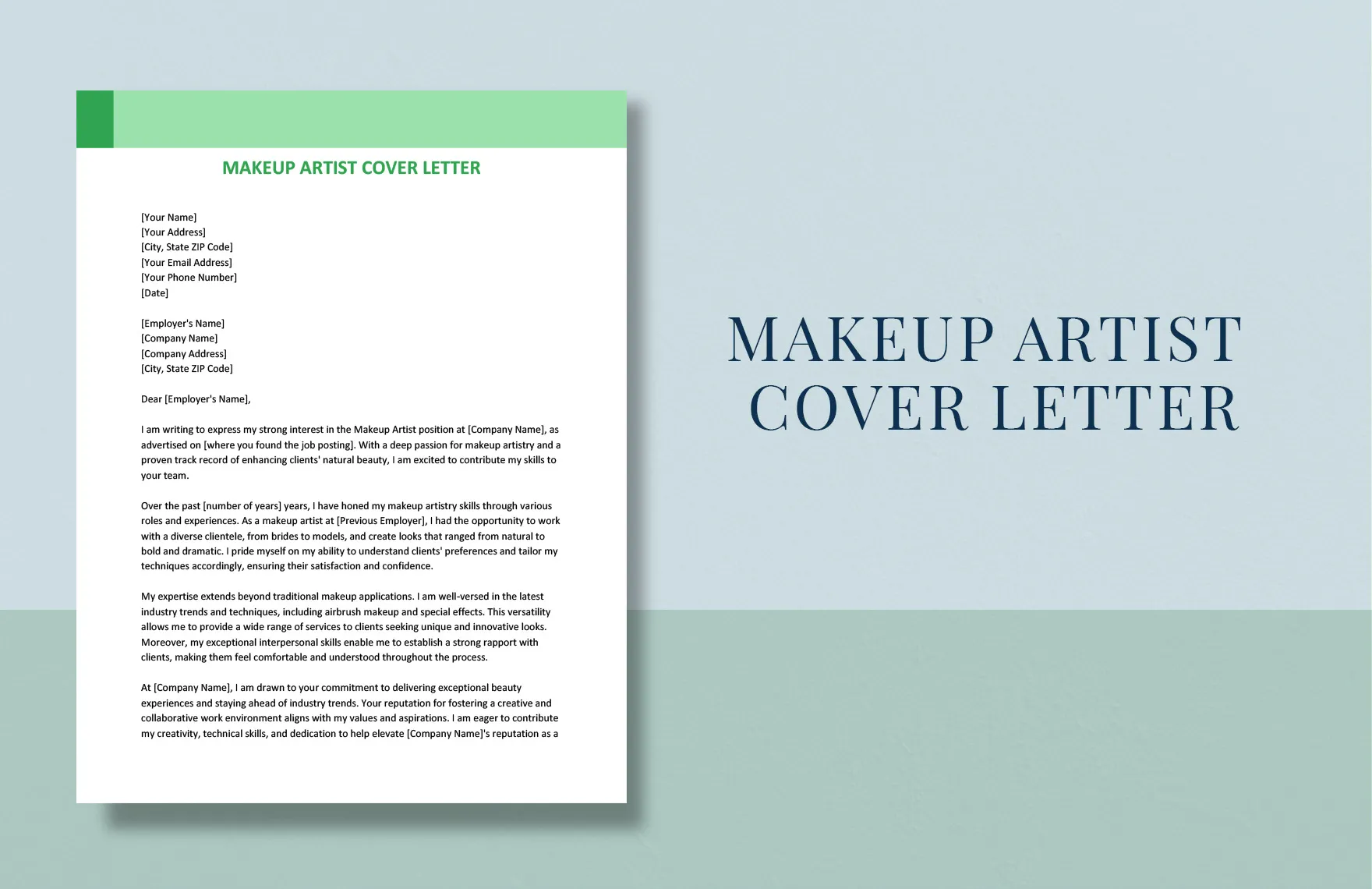
The formatting of your cover letter is just as important as its content. A well-formatted cover letter is easy to read and conveys professionalism. Use a clean and readable font, such as Times New Roman, Arial, or Calibri, with a font size between 10 and 12 points. Use single spacing for the body of the letter, with a blank line between paragraphs. Keep the letter concise, aiming for no more than one page. Use clear headings and subheadings to organize the content and make it easy for the reader to scan. Maintain consistent margins throughout the document. Avoid using excessive colors, italics, or unusual formatting styles, as they can distract from the content. A professional and polished format demonstrates your attention to detail and respect for the employer’s time.
Contact Information and Header
Your cover letter should begin with your contact information, followed by the date and the employer’s contact information. Your contact information should include your full name, phone number, email address, and optionally, your LinkedIn profile URL or website link. Place your contact information at the top left or right corner of the page. Below your contact information, include the date of the letter. Then, address the letter to the hiring manager or the appropriate person, if known. If you are unsure of the hiring manager’s name, research the company or the job posting to find out who the contact person is. If you are still unable to find a name, use a general greeting like ‘Dear Hiring Manager.’ Ensuring the proper contact information shows that you are detail-oriented and have taken the time to prepare a complete and professional application.
Formatting and Layout
The layout of your cover letter should be clean, organized, and visually appealing. Use white space effectively to avoid a cluttered appearance. Keep the paragraphs relatively short and break up the text with headings and bullet points when appropriate. Avoid using excessive bolding or underlining, as it can be distracting. The layout of your cover letter should guide the reader’s eye and highlight the most important information. Use a professional letter format, with consistent margins and spacing throughout the document. The goal is to create a polished and easy-to-read document that showcases your professionalism and attention to detail. Ensure the layout is clear and visually appealing, making it easy for the hiring manager to read and understand your qualifications.
Proofreading and Editing
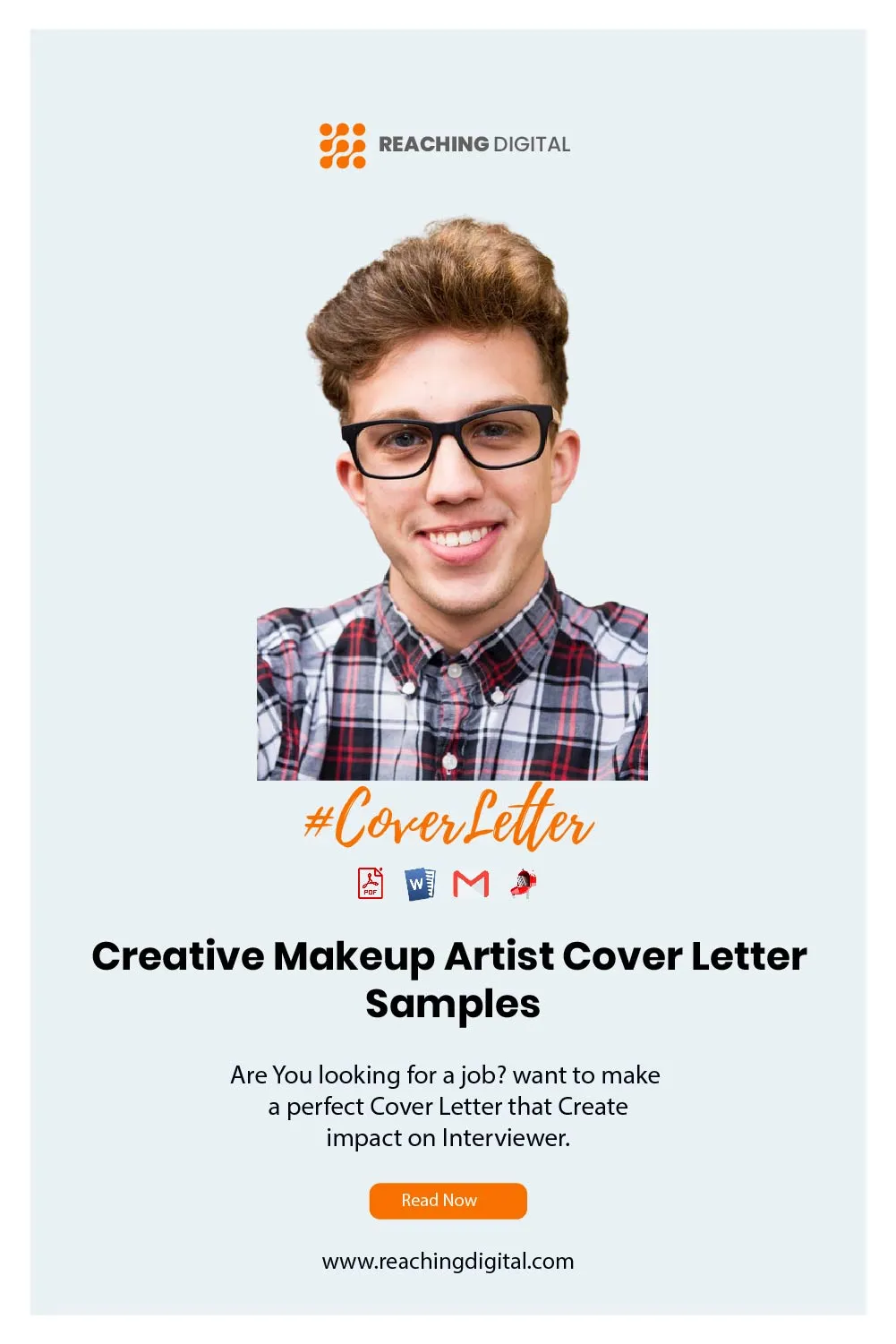
Proofreading and editing your cover letter is absolutely essential. Typos, grammatical errors, and spelling mistakes can damage your credibility and give the impression that you are not detail-oriented. Before submitting your cover letter, carefully review it for any errors. Use a grammar and spell-checker, but also read the letter aloud to catch any awkward phrasing or sentence structure issues. Ask a friend, family member, or career advisor to proofread your cover letter as well. A second pair of eyes can often catch errors that you might miss. Ensure that your cover letter is free of errors and reflects your professionalism. Thorough proofreading will help you make a positive first impression and increase your chances of success.
In conclusion, a well-crafted cover letter is a crucial tool for makeup artists seeking employment. By highlighting your skills, showcasing your portfolio, tailoring your letter, and following proper formatting guidelines, you can significantly increase your chances of landing an interview. Remember to always proofread and edit your cover letter to ensure that it is error-free and reflects your professionalism. Use this guide as a starting point, and good luck in your job search!
